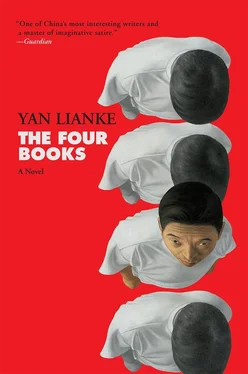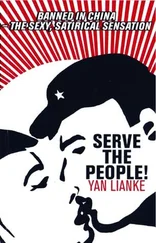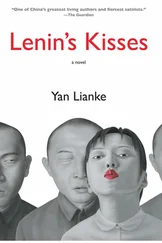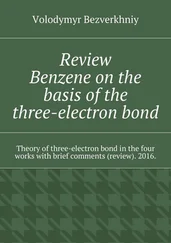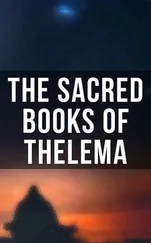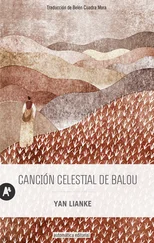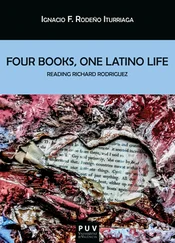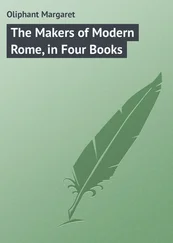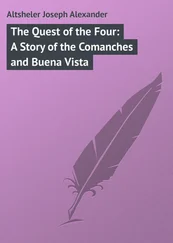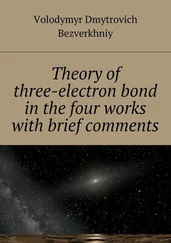The Child was wearing new shoes with thick soles and made from blue hand-woven cloth. When he lifted his foot to examine the bottom of his shoe, he saw that sure enough there was a large wet spot. He therefore climbed onto the cart, sitting down next to the steel star wrapped in a warm, soft cotton quilt. The sparrows flew alongside like streaks of light and scattered sound. The Child and the Theologian proceeded down the road, whereupon the Theologian began to feel rather hot, and used some snow to wipe away his sweat and to stanch his thirst. Then, like a mule, he continued pulling the cart.
The Child looked up at the sky and remarked, “It’s very quiet. Tell me a story.”
The Theologian asked, “What should I talk about?”
After considering for a moment, the Child said, “Why don’t you tell me more about that book you are so fond of reading?”
The Theologian also considered for a while, and said, “Should I continue from where I left off?”
“As you wish,” the Child replied.
While pulling the cart, the Theologian thought back to the time when he had met the Child alone and told him stories from the Bible. He remembered that he had already told the Child how, in Genesis, God created earth and man, and how man sinned and was expelled from the Garden of Eden. He had already told the Child about Noah’s Ark, the Tower of Babel, Moses and the Ten Commandments, together with the stories of the golden calf, the bronze snake, and the first king of Israel. The Theologian wanted to tell the Child all of the Bible’s best stories, and therefore decided that he should tell him about the birth of Jesus. So, while pulling the cart through the snow and light, he said, “Joseph was a carpenter from Nazareth, and his fiancée was Mary, whose portrait you took from me. At that time, Mary was still young, but as she was preparing to marry Joseph, she unexpectedly became pregnant. Joseph was very distressed by this, and assumed that Mary had betrayed him. Just as he was about to call off the marriage, however, God appeared to him in a dream and said, ‘Don’t act rashly.’ He said, ‘Mary’s child will be born with God’s power and spirit. You must marry her, and raise her son as your own. You must name the child Jesus . The name Jesus means “savior”. and a savior refers to someone who will always, always go into adversity to rescue others.’”
As the Theologian was telling the Child about the birth of Jesus, he became very animated. “In this way,” he concluded, “Mary delivered her child, and Jesus was born. As a result, the people were given Christ the Lord — an idol to worship in the form of Jesus and Mary.”
After describing the birth of Christ, the Theologian pulled the cart another ten li , until they could barely make out the buildings in the ninety-ninth. The Theologian was so thirsty that he began sucking on the snow from the side of the road. He had sand in his shoes, and when he took them off, he found they were also full of steam from his sweat. The Child looked at this steam, and then gazed up at the sky and asked softly,
“Have you finished your story?”
“I’ve finished.”
The Theologian continued pulling the cart forward. The snow on the ground became increasingly thin, and in some places the sandy earth was visible. In order to reach town sooner, and since the cart was relatively light, they decided to take a shortcut. On this shortcut, they encountered a hill, which was facing the sun and therefore had relatively little snow. Then they reached a sunny area where the snow had almost all melted. On the sandy road, a yellow light could be seen. So it came to pass. The Child got down from the cart, and as he was helping push he asked,
“Who got Mary pregnant?”
The Theologian said, “It was God.”
“Jesus’s father was God?”
“Jesus didn’t have a father, but he is God’s son. Jesus is God.”
“That’s crazy.” The Child was dissatisfied, and said, “I won’t penalize you for your superstitious beliefs, but if Jesus didn’t have a father, how did Mary, his mother, get pregnant?” Determined to get to the bottom of this, the Child looked intently at the Theologian, and added, “I don’t believe any of what you are telling me. You need to explain how Jesus’s mother could have gotten pregnant without Jesus having a father, and if you can’t, that will mean you are simply spouting nonsense, and if you are spouting nonsense, I will have no choice but to make you forfeit your red blossoms.” As his voice rose, he continued pushing the cart. The Theologian turned around to look at him, but as he was about to explain, they arrived at a hill. The hill was about ten meters long and as steep as the roof of a house, or about forty degrees. Whereas the Theologian and the Child would have to struggle to push the cart up other hills, this time they found that they didn’t need to exert much effort, as the cart rolled forward at the slightest touch.
Going up the hill was as easy as if they were going down.
The Theologian turned to look at the Child.
The Child looked back at the Theologian.
They stopped pushing and pulling the cart forward, and found that it proceeded up the hill on its own accord. The Child and the Theologian laughed with surprise. Holding the cart’s handle, they followed it up. When they reached the top, they gazed down at the bright white expanse of snow below them, and realized that this was the former course of the Yellow River. The hill was a vestige of the old riverbank. They pushed the cart down the other side of the hill, then watched to see if the cart would again move forward by itself, and the cart’s wheels did indeed start moving on their own. While resting at the top of the hill, the Child picked up a bottle on the side of the road, and when they got to the bottom, he put the bottle on the ground and found that it started rolling up the hill by itself. But when he tried to roll the bottle back down the hill, and no matter how hard he pushed, it simply wouldn’t move.
It was all very strange.
The Child and the Theologian looked at each other and smiled. They then unloaded the pentagonal star from the cart and placed it at the top of the hill. The cart, the bottle, and a straw hat, all of which were round, rolled up the hill on their own accord. However, when this star was placed next to the road and away from the top of the hill, the cart, the hat, and the bottle wouldn’t roll, no matter how hard they were pushed. The Child opened the quilt in which the star was wrapped, together with the silk cloth and the paper, then returned the star to the top of the hill, to the side facing the sun. The sun was extremely bright, and the sky was perfectly blue. Everything was so quiet you could hear the clouds sliding through the air. The star was placed in the red light. It was one foot, eight and a half inches in diameter, and two-point-three inches thick. The back was the greenish black color of newly smelted steel, and was branded with the Child’s name, together with the date and time when it was removed from the furnace. The star was painted red on the front, and smelled of ink. It was like fire descended from the sky, burning at the top of this peculiar hill. The Child then took the cart, the bottle, and the straw hat to the side of the hill facing the sun, and once again they started rolling up the hill toward the star on their own accord.
The Child laughed.
The Theologian also went to try. He announced, “This is indeed a strange hill.”
“No, it’s not,” the Child said. “You no longer need to explain how Jesus’s mother could have gotten pregnant without there being a father.” Then, he again wrapped the star in the paper, silk, and the quilt and followed the cart forward, his step now much lighter than before.
Читать дальше
